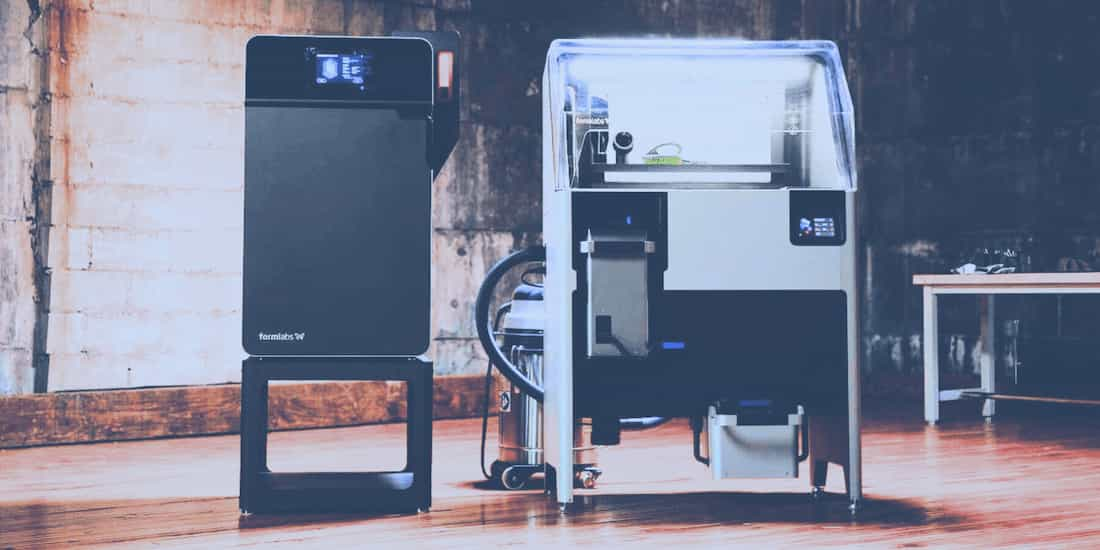Looking to 3D print a part that can withstand high impacts or repetitive use? We have created a list of the 5 toughest 3D printing materials and attached some of our suggestions to help make your decision a little easier.
-
Reinforced Carbon Fiber
Composed of fiber that contains carbon atoms in a crystalline structure that provides high strength. Due to its highest strength to weight ratio, this filament is an ideal choice for the automotive industry. The materials’ high heat resistance level, stability, and strength make carbon fiber one of the toughest filaments around.
Markforged 50cc Carbon Fiber CFF Spool
-
ABS (Acrylonitrile Butadiene Styrene)
This stiff and impact-resistant thermoplastic is perfect to use for moving parts and end-use products. Not only is ABS durable against impact and fatigue, but it is also heat and water-resistant. It is great for those looking for a high strength material while staying on a budget.
-
TPU (Thermoplastic Polyurethane)
Known for its flexibility and being highly durable, TPU also has a strong resistance to impact, chemicals, wear and tear, and abrasion making this an extremely tough filament to work with. This material is ideal for shock absorption and is a top choice for prints requiring high levels of flexibility and strength.
-
PC (Polycarbonate)
Considered one of the strongest filaments by many, PC’s high shatter resistance and high heat resistance make this a very tough material. Used for bullet-proof glass, riot gear, scuba masks, and much more, polycarbonate is a material that should be on your radar if you are looking for strength.
-
PEEK (Polyether Ether Ketone)
Polyether Ether Ketone, a semi-crystalline thermoplastic well known for its high-end chemical resistance and high strength. PEEK is also highly resistant to organic, bio, and chemical degradation with an operating temperature of 250°C. One of the most reliable and trusted filaments in the industry and is a key contender in the toughest 3D printing materials.
Explore the wide range of 3D printing materials offered in our store!
Les 5 matériaux 3D les plus résistants
Vous cherchez à imprimer en 3D une pièce capable de résister à des chocs importants ou bien à une utilisation répétitive? Nous avons créé une liste des 5 matériaux d’impression 3D les plus résistants. Nous avons ajoute certaines suggestions pour vous aider à prendre des décisions.
-
Fibre de carbone
Ce matériau est composé de fibres contenant des atomes de carbone dans une structure cristalline qui lui procure une grande force. En raison de son rapport poids/résistance très élevé, ce matériau est le choix idéal pour l’industrie automobile. La grande résistance à la chaleur, la stabilité et la résistance des matériaux font de la fibre de carbone un des filaments les plus résistants du marché.
-
ABS (Acrylonitrile Butadiene Styrene)
Ce thermoplastique rigide et résistant aux chocs est parfait pour la construction des pièces mobiles et des produits finaux. Non seulement l’ABS est résistant aux chocs et à la fatigue, mais aussi a la chaleur et a l’eau. Il est idéal pour ceux qui recherchent un matériau très résistant, tout en respectant leur budget.
-
TPU (Polyurethane Thermoplastique)
Connu pour sa flexibilité et sa grande durabilité, le TPU a également une forte résistance aux chocs, aux produits chimiques, à l’usure et à l’abrasion, ce qui en fait un filament extrêmement résistant. Ce matériau est idéal pour l’absorption des chocs et constitue le premier choix pour les impressions nécessitant des niveaux élevés de flexibilité et de résistance.
-
PC (Polycarbonate)
Considéré par beaucoup comme l’un des filaments les plus résistants, sa grande résistance a la chaleur et aux chocs en font un matériau très résistant. Utilise pour le verre pare-balles, le matériel anti-émeute, les masques de plongée et bien plus encore, le polycarbonate est un matériau qui devrait retenir votre attention si vous recherchez un matériau résistant.
-
PEEK (Polyether Ether Ketone)
Ce matériau est un thermoplastique semi-cristallin bien connu pour sa résistance chimique élevée. Le PEEK est également très résistant à la dégradation organique, biologique et chimique avec une température de fonctionnement de 250°C. L’un des filaments les plus fiables et les plus reconnus de l’industrie en fait un élément important dans le domaine des matériaux d’impression 3D les plus résistants.



